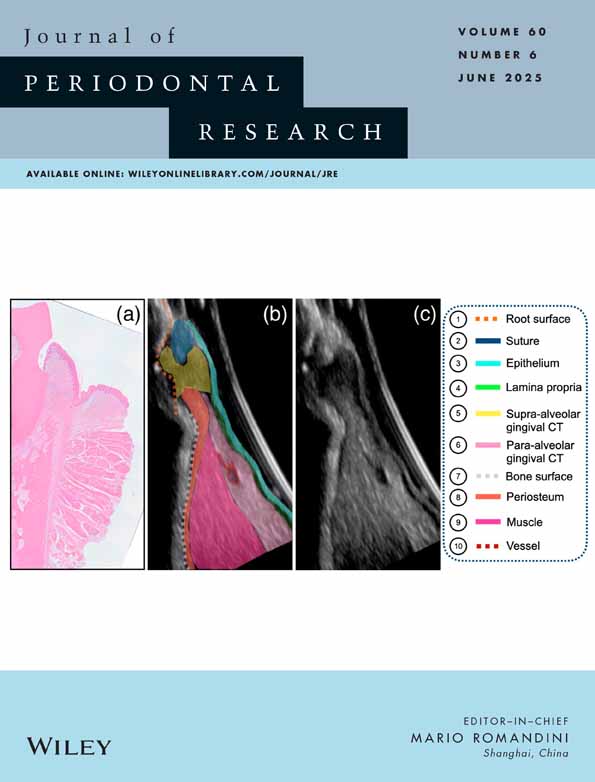Variations in the gingival polymorphonuclear leukocyte migration rate in dogs induced by chemotactic autologous serum and migration inhibitor from tobacco smoke
Abstract
The rate of migration of polymorphonuclear leukocytes from gingiva around single teeth in Beagle dogs was studied. Polymorphonuclear leukocytes emanating from the gingival crevices were harvested with standardized rinses at two minute intervals. In between the rinses one of three substances was applied: endotoxin activated autologous dog serum, a cigarette smoke solution and the vehicle as a control. In vitro, the activated serum was chemotactic and the cigarette smoke solution inhibitory to polymorphonuclear leukocyte migration. In vivo, the cigarette smoke solution also depressed the gingival polymorphonuclear leukocyte migration rate. The in vivo response to activated serum was biphasic with a depression first and an elevation later in the polymorphonuclear leukocyte migration rate. The experiments were performed on relatively healthy and distinctly inflamed gingiva. The higher polymorphonuclear leukocyte migration rate in inflamed gingiva was affected by the test agents in a similar way as the migration rate from healthy gingiva.




